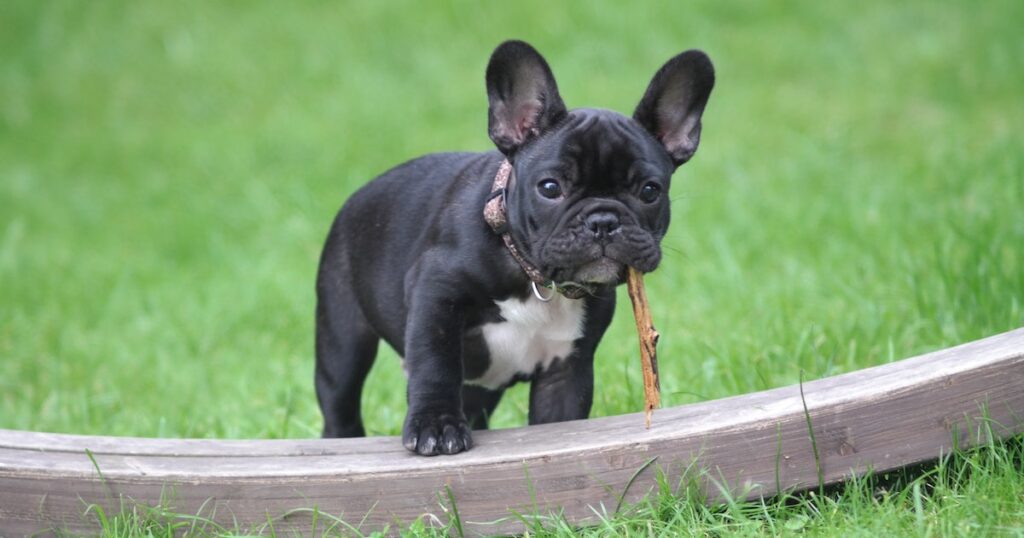A Bulldog puppy, for example, whether it’s a French Bulldog or an English Bulldog, can cost up to three times that of many breeds of dogs, even if they are larger.
Just to give you an idea, according to the AKC, the English Mastiff can weigh up to around 150 kg, and the price of a puppy of this breed costs an average of R$7,000. The French Bulldog, on the other hand, can cost around R$12,000, and they weigh less than 13 kg.
How can such a thing happen, you must be wondering now. Apparently, the tutors are paying much more for the French Bulldog, kg for kg, for so little dog. And the same goes for other bulldogs.
All kidding aside, there’s a reason these Bulldog puppies command such a high price over other breeds, and we’ll break it down for you below.
Check out!
The high cost of small dogs
Breeding a bulldog in itself has a high cost.
If you’ve come across a puppy for about the same price as an apartment or a car (a bit of an exaggeration), you’re probably paying for the breeder as much as you are for the animal.
That’s because most of the reputable breeders on the market are treating their litters like a full-time job, and the more you progress in breeding and succeed, the more the breeder’s time will be worth — to them, at least. After all, there’s no way to know if these “puppy-children” think the same of them, in terms of value.
In addition, there is no denying that there are some characteristics in Bulldogs that end up raising their cost and market value. The coat color, some rarer, for example, is one of the factors that ends up increasing the final price of the puppy.
In the case of the French Bulldog , colors such as “blue” or “lilac” (shades of gray), in addition to pure white (albino), are much more expensive than puppies with brown, black or spotted fur.
There are even breeders who distinguish the value of male or female puppies. In theory, this difference in values should be determined by the quality of each individual.
But in practice, some breeders put a higher price on females, because they consider them as “potential bellies”, in case of eventual breeding in the future.
Breeding Bulldog is a lucrative business
To give you an idea, there is a gray brindle French Bulldog, called “Micro Machine”, in Temecula, California, which was valued at $100,000 (over R$500,000) and which has generated more than half a million dollars in puppies.
In other words, the little “gigolo” is really a baby and money making machine. Therefore, if you have a good specimen of the breed at home and are thinking of getting into the dog breeding business, it is a fact to consider.
The thing is, even though Bulldogs have that adorable, flat-nosed, wrinkled appearance, they’re pretty troublesome to breed, and the cost goes far beyond the price of a puppy .
Like any purebred dog within the perimeter of physical normality, it takes a lot of care and experience to breed bulldog puppies without them being born with more genetic problems than they already have “by nature”.
At first, some characteristics such as size, physical appearance and character traits are predictable and determined by the specific breed standard. For example, a purebred Bulldog puppy, pedigree or not, must always be healthy, short in stature, big-headed in relation to the wider body, with a docile temperament.
However, Bulldogs can present some diseases of a hereditary nature, due to years of undue and excessive crossings, which today are part of their breed standard, considered “natural to the breed”.
However, these diseases are not particularities and should not be treated as such, much less widespread in crosses. After all, a healthy Bulldog should be healthy, simple as that.
But why is the Bulldog so expensive?
The bulldog is expensive for several reasons characteristic of the breed.
Many may wonder, “What can be so difficult about breeding dogs?”. “Just wait for the female to come into heat, leave her alone with a male for a while and after a few months you either have a large litter of puppies or a smaller litter.”
Well, it’s not that simple — at least not for Bulldogs, be it a French Bulldog or an English Bulldog .
That’s because these dogs usually have problems and a lot of difficulty breathing without human intervention, which makes it even more difficult during the cross. They still have narrow hips and the lack of a “romantic adventurer” spirit makes males have greater difficulties in mounting females.
For this reason, it is very common for artificial insemination to be part of the breed’s reproduction process, increasing its cost and final price. But not only that.
There are many other potential medical costs due to the physical characteristics of the breed. As we said, the bulldog has narrow hips, which combined with the proportionally immense skulls of the puppies, most of the time, they need cesarean sections to be born, raising the costs even more.
And if you think that after birth, breeders stop spending on Bulldog puppies, you are wrong. From birth onwards, potential needs for corrective surgery to fix the narrowed air passages in the nostrils are common, in addition to proper medical check-ups and vaccinations , which every breeder should have.
The whole process is a bottomless pit, where the creator will throw a large part of his investment. Therefore, as part of the business, all these costs and time invested, uncertainties, failure and success end up being included in the price of puppies.
And the costs go beyond the final price
For those who already think that the price of a Bulldog alone is too expensive, even if you now know what is involved in its reproduction, it is still necessary to consider everything that will come after the puppy is under your responsibility.
Therefore, the initial cost of a bulldog is just the beginning of your accounting, as the costs of having one of these adorable “snorers” at home will make a difference in your monthly budget.
No matter how responsible the breeder was and how strong the dog’s lineage is, as we said, the breed is susceptible to many unpleasant canine diseases , due to hundreds of years of human interventions to try to “improve” its original natural form. .
Therefore, at some point there is a high chance that those narrow hips mentioned above will lead to dysplasia, which needs to be treated by the veterinarian. They are also prone to spinal, digestive, respiratory and eye problems, as well as allergies or dermatitis, and being a brachycephalic breed , just to name a few.
So, with luck, veterinary visits will not be frequent, but they should be part of the routine, and when the most serious problems appear, they will not be cheap, due to the treatment and medications.
In addition, the breed-specific or non-breed super premium feed is the most suitable, in addition to being the most expensive on the market. They also have very sensitive skin, and need specific shampoos and products to avoid skin allergies.
Finally, include costs for winter clothing, bedding and toys that are frequently destroyed, etc. Therefore, even if you decide to adopt, these expenses should be considered in the budget.


